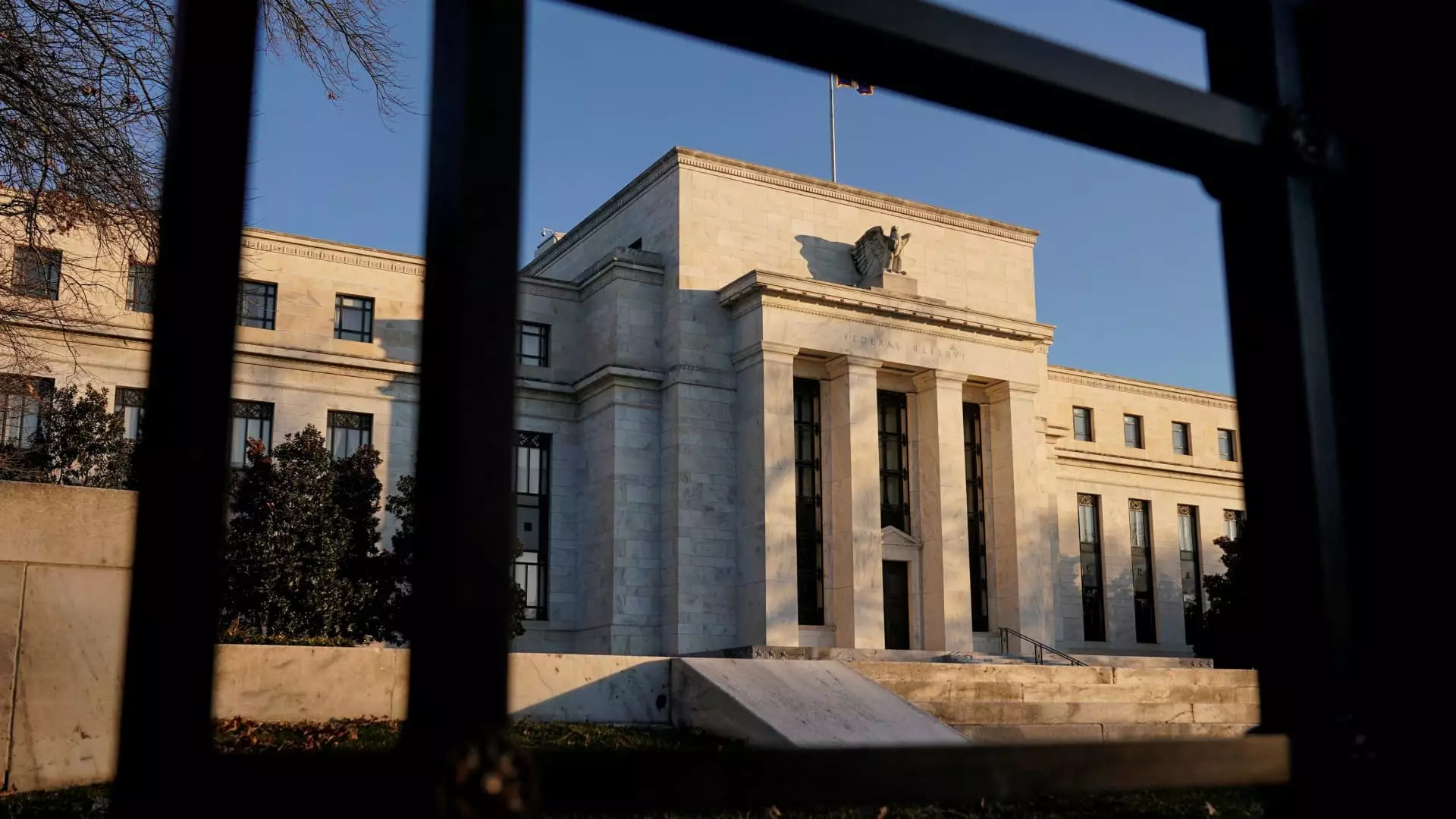In an economy that thrives on movement and stability, the Federal Reserve’s recent decision to keep interest rates unchanged highlights the pervasive sense of uncertainty stemming from President Donald Trump’s ongoing tariff initiatives. With each passing day, what was initially seen as a bold economic strategy now threatens to spiral into a damaging economic malaise, leaving consumers and businesses in a precarious position. The belief that tariffs on essential commodities like aluminum and steel could shield domestic production is rapidly being overshadowed by the ugly reality of higher consumer prices. A well-respected economics professor, Brett House from Columbia Business School, pointedly emphasizes that such tariffs “ripple more widely across the American economy,” suggesting that consumer costs will only continue to escalate.
The Federal Reserve’s Cautious Stance: A Necessary Approach?
National Economic Council director Kevin Hassett’s recent warning about the looming “uncertainty” is not just an echo of economic theory; it reflects real-life anxieties that affect everyday Americans. With inflation risks tethered to the fluctuating world of tariffs, it seems the Federal Reserve is entrenched in a “wait-and-see mode.” This hesitance suggests an increasingly anxious central bank, which finds itself caught between the demands of economic growth and the unsettling effects of trade disputes. The prudent approach of the Fed may be necessary, but it is infuriatingly slow for citizens looking for relief from escalating costs.
With inflation rates holding steady while borrowing costs remain high, American households continue to bear the brunt of this turbulent economic landscape. It’s infuriating that while the Fed corrects course on its benchmark rates, consumer borrowing costs seem to be perpetually stuck—a harsh reality that signals a lack of control over damaging external factors such as tariffs. Greg McBride, chief financial analyst at Bankrate.com, has voiced the understandable frustration of many: “The pressure on household budgets is unrelenting.” This is not just theoretical; it’s a tangible struggle—one that comes with a hefty price tag.
Consumer Borrowing Costs: The Hidden Toll
The intricate web that comprises consumer finances is now more complicated than ever. Even as the Fed lowers interest rates, these adjustments have not fully translated into relief for consumers. Mortgage, auto, and credit card rates play a direct role in everyday life, and while they are slowly declining, they still hover at dizzying heights. The average annual percentage for credit cards has only marginally decreased, sitting at a staggering 20.09%. Consumers find themselves grappling with hefty repayments that eat away at budgets.
Amid these pressures, one must consider whether the increased costs of essential living demands dampen the effectiveness of any marginal rate decreases that the Federal Reserve enacts. While experts suggest that lower borrowing costs could eventually benefit consumers wanting to make big-ticket purchases like homes or cars, the transition feels sluggish. Rather than seeing a significant easing, consumers face the daunting prospect of high sticker prices driven up by trade tariffs, suggesting that any financial relief may be fleeting at best.
The Inflation of Goods: Tariffs Bite Deep
What’s particularly disheartening for the everyday American consumer is the realization that even as specific borrowing rates are on a downward trend, prices for essential items are steadily creeping upward. It’s a paradox that defies logic; the same tariffs intended to bolster American manufacturing are instead creating an environment in which consumer prices are inflating. With car prices rising alongside tariffs on imported parts, auto loan rates, despite their recent reductions, continue to pose challenges for potential buyers. The situation is complicated further by the looming possibility of a recession, which shadows the hope for economic recovery.
As McBride insightfully points out, “Mortgage rates are falling because of concerns about economic weakness.” This decline serves as a warning flag rather than a beacon of recovery, suggesting that rather than flourishing, the housing market could be stagnating, compounded by fears of a broader economic decline.
The Silver Lining: Savings Amidst Uncertainty
It’s tempting to view these economic events through a purely negative lens, but amid the chaos, there lies a silver lining: savers are reaping some rewards. Reports show that top-yielding online savings accounts have stabilized above inflation rates—a curious but welcome anomaly in the current landscape. This aspect offers a measure of comfort to those who can afford to save, highlighting a frequently overlooked element of the financial ecosystem.
What remains thought-provoking is how wealth distribution plays into this narrative. While the financial burden falls heavily on consumers reliant on credit for daily expenses, those who can save stand to gain, revealing a dichotomy of experiences within the same economy. It’s crucial that policymakers recognize this gap and work toward fostering an environment that encourages equitable growth, connecting savings rates to broader economic recovery.
Economic policy under the current administration has significant ramifications that extend far beyond simple tariff levies. As economic uncertainty looms, the ripple effects of these policies create a complex interplay between inflation, consumer behavior, and overall economic wellbeing. The stakes are high as we navigate this precarious landscape, and it is imperative that we engage in thoughtful discussions about the implications of such strategies moving forward.

